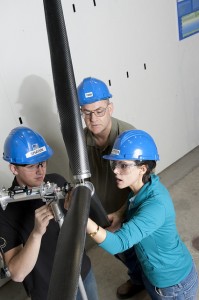North Carolina’s House of Representatives got it right on clean energy last week—even though “getting it right” had to mean formalizing a refusal to get it wrong. Last Wednesday, North Carolina’s House Public Utilities Committee showed a bipartisan commitment to clean energy with a vote of 18-13 against a bill set to weaken their existing Renewable Portfolio Standard. The bill threatened a blatant step backward at a time when moving forward on clean energy is more critical than ever. Despite the fact that the Committee’s Chairman, House Majority Whip Mike Hager (R-Rutherford), introduced his negative bill and diluted it several times, he could not garner the support he hoped for.

North Carolina’s story is not entirely unique. A similar display of support for clean energy came from Kansas days earlier, as state lawmakers rejected a bill like Hager’s. Looking outward, there is ample opportunity for others to follow suit, as attacks on state renewable energy policies have advanced in more than 20 states.
Ultimately, jobs won the votes in North Carolina & Kansas
Yes, this was an important win for renewable energy. But according to those who cast their votes against Hager’s bill in North Carolina, this was all about jobs.
“It was based off local issues back home. I would have had a difficult time talking to a CEO who just brought 300 jobs to Cleveland County [and telling him] that I’m going to vote to eliminate this program that justified their investment.” – Rep. Tim Moore
Likewise in Kansas, jobs helped tip the scale in favor of a clean energy future:
“It’s not about a deal that a bunch of suits made one evening. It’s about jobs. It’s about economic vitality. It’s about the future health of Kansas citizens. It’s about the future environmental health of our state.” – Rep. Julie Menghini
Rep. Moore refers to the reality that the policy in question allowed North Carolina to become the fifth-largest solar energy developer in America, and helped the state at a desperate economic moment. In Kansas, Rep. Menghini and her colleagues voted with foresight, amplifying that the outcomes of energy debates will have multi-generational impacts. These first strong victories in defending clean energy polices show what polls continue to underscore – Americans want more clean energy, not less.
Building a bigger story

Now is not the time to move backwards in our pursuit of clean energy for America, and thank you to the North Carolina House of Representatives for demonstrating that we do not need to. The growing abundance of clean energy solutions at our fingertips render attempts like Hager’s inexcusable.
America is ready to get to work building infrastructure to support power sources that do not pollute our air and water. We are ready to share in the successes we continue to see abroad, and build responsibly sited wind turbines off our shores. We are ready to leave behind dangerous pipelines and coal mines that destroy wildlife habitats and contribute to climate change. And finally, we are ready for our elected leaders at both the state and federal levels to hear us, and to help in bringing to fruition the energy future that is well within reach—or at the very least, to please, stay out of the way.
 Offshore Wind Energy
Offshore Wind Energy 

